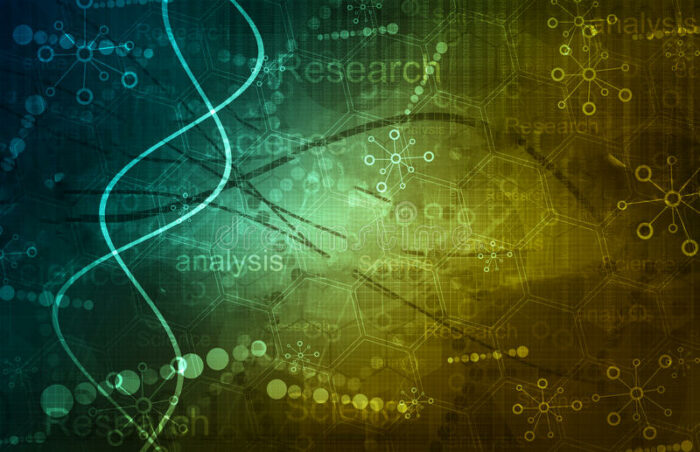Research in CST
Building the evidence base…
One of the challenges for therapists in complementary medicine is in doing research that provides an evidence base. Part of the challenge comes because we don’t treat all of the people with similar symptoms the same way, because we may use or combine different approaches and also because we don’t have huge sums of money to throw at the problem. However, Dr Upledger did do a lot of research into the physical techniques when he was at Michigan State University. In fact, he initially took up the post to research what was happening, if anything, when cranial osteopaths carried out their techniques.
Much of what he learned, and the research he carried out with others, is recorded in the appendices of his book CranioSacral Therapy. There were also numerous publications in osteopathic journals in the 70s and 80s, which can be hard to find copies of today. On this page, you will find a mix of some of the older and more up-to- date research that has been going on. However, this is not the same as studies that ‘prove’ the effectiveness of CST for different singular diagnoses.
There are many more research articles, case studies and relevant articles in a searchable database on Upledger Institute International’s website. Please do have a rummage and see what you can find!
There are also lots of our previously linked to articles now listed in the CST Blog pages. Please search there for topics of interest.

Published Articles
Here are some to start you off:
Effectiveness of Craniosacral Therapy in Cervicogenic Headache
Keerthi Rao and Subhash Katri MOJ Yoga & Physical Therapy Volume 2 Issue 4 – 2017
A randomized controlled trial investigating the effects of craniosacral therapy on pain and heart rate variability in fibromyalgia patients.
Castro-Sanchez AM, Mataran-Penarrocha GA, Sanchez-Labraca N, Quesada-Rubio JM, Granero-Molina J, Moreno-Lorenzo C: Clin Rehabil Jan 25(1):25-35, 2011. Epub 2010 Aug 11. Department of Nursing and Physical Therapy, University of Almeria, Spain, adelaid@ual.es.
Credibility of low-strength static magnet therapy as an attention control intervention for a randomized controlled study of Craniosacral therapy for migraine headaches
Curtis P, Gaylord SA, Park J, Faurot KR, Coble R, Suchindran C Coeytaux RR, Wilkinson L, Mann JD: . J Altern Complement Med Aug; 17(8):711-21. Epub 2011 July 6. Department of Family Medicine, School of Medicine, University of North Carolina at Chapel Hill, Chapel Hill, NC 27599, USA.
Multipractitioner Upledger Craniosacral Therapy: descriptive outcome study 2007-2008.
Harrison RE, Page JS: J. Altern Complement Med Jan; 17 (1): 13-7, 2011. Epub 2011 Jan 9. Harrison RE. Page JS. General Practice, National Health Service, Edinburgh, UK. rachelharrison@onetel.com.
Influence of Craniosacral Therapy on Anxiety, Depression and Quality of Life in Patients with Fibromyalgia.
Mataran-Penarrocha GA, Castro-Sanchez AM, Garcia GC, Moreno-Lorenzo C, Carreno, TP, Zafra MD: Evid Based Complement Alternat Med. Sep 3. [Epub ahead of print] 2009. Almeria, CP 04009, Spain, lemur@correo.ugr.es.
Effect of craniosacral therapy on lower urinary tract signs and symptoms in multiple sclerosis.
Raviv G, Shefi S, Nizani D, Achiron A: Complement Ther Clin Pract May; 15(2):72-5. Epub 2009 Jan 30. Urology Department, Sheba Medical Center, Tel Hashomer, Israel, gravivg@zahav.net.il
Clearing the Fog: Craniosacral Therapy Aims to Ease Dementia
By: Susan Heitler Ph.D. An interview with Michael Morgan about applying CranioSacral techniques to the treatment of Alzheimer’s and other types of dementia. Psychology Today Blog June 2016
Craniosacral stillpoint technique: exploring its effects in individuals with dementia
Gerdner LA, Hart LK, Zimmerman MB: . J Gerontol Nurs Mar; 34(3):36-45, 2008.
The effect of oscillating energy manual therapy on lateral epicondylitis: a randomized, placebo-control, double-blinded study. <abstract only>
Nourbakhsh MR, Fearon FJ: J Hand Ther Jan-March; 21(1):4-13, 2008. Department of Physical Therapy, North Georgia College and State University, Dahlonega, Georgia 30597, USA. mrnourbakhsh@ngcsu.edu.
The impact of acupuncture and craniosacral therapy interventions on clinical outcomes in adults with asthma.
Mehl-Madrona L, Kligler B, Silverman S, Kynton H, Merrell W: Explore (NY) Jan-Feb; 3(1):28-36,2007. Explore (NY). 2007 Jan-Feb;3(1):28-36. Department of Family Medicine, University of Saskatchewan College of Medicine, Saskatoon, SK, Canada, lewis.mehl-madrona@usask.ca.
Combined Manual Therapy Techniques for the Treatment of Women With Infertility: A Case Series. Mary Ellen Kramp, DPT, CLT-LANA
The Effects of Cranial Manual Therapy and Myofascial Release Technique on Somatic Tinnitus in Individuals without Otic Pathology: Two Case Reports with one year follow up. Massoud & Nourbakhsh 2012
Recording the Rate of the Cranial Rhythmic Impulse Nelson, KE., Sergueef, N., Glonek, T. The Journal of the American Osteopathic Association. 2006 106(6):337-341
The palpated cranial rhythmic impulse (CRI): Its normative rate and examiner experience Nicette Sergueef, Melissa A. Greer, Kenneth E. Nelson*, Thomas Glonek International Journal of Osteopathic Medicine 14 (2011) 10-16
Osteopathic versus orthopedic treatments for chronic epicondylopathia humeri radialis: a randomized controlled trial. <abstract only>
Geldschlager S: Forsch Komplementarmed Klass Natuheilkd. Apr; 11(2):93-7, 2004.
Cranial Rhythmic Impulse Related to the Traube-Hering-Mayer Oscillation: Comparing Laser-Doppler Flowmetry and Palpation. Nelson, KE., Sergueff, N., Lipinski, CM., Chapman, AR., Glonek, T. The Journal of the American Osteopathic Association.2001 101(3): 163-173.
